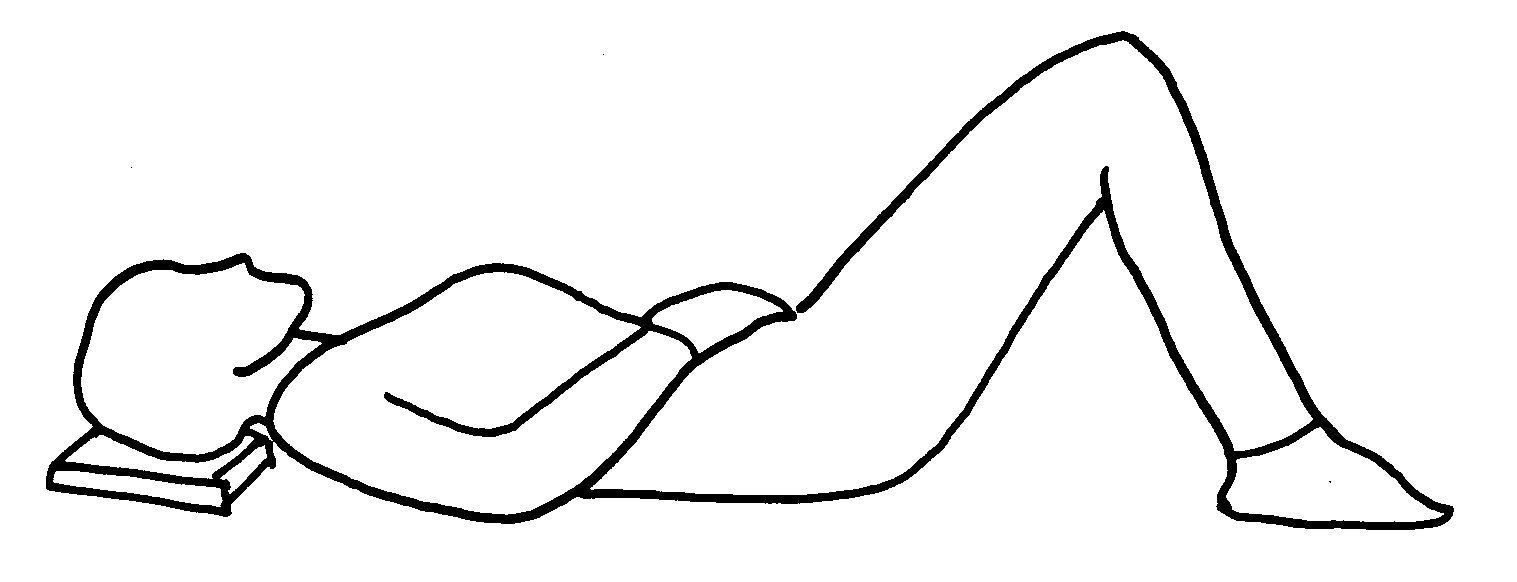by N. Brooke Lieb When I began my training as a teacher of the Alexander Technique, my biggest "symptom" was not pain, it was anxiety. I had started to have panic attacks, where I felt light headed and would begin to hyperventilate, and I was afraid I was dying. Often, the fearful thoughts centered around having an allergic reaction to something that would prove fatal. (I have had three incidents of strong allergic reactions, one to medication, one to food and one undetermined, none of which has been fatal.)
Learning to be Calm in a Crisis—Especially When the Crisis Was Mostly in My Mind
During the second year of my training, I noticed that I had not had any "incidents" in recent memory. A couple of years after I graduated, I recall watching a panic attack come on while I was riding the subway. I felt a flush of heat rise from my heart up to my ears (adrenaline rush?), my heart started pounding, and I began to think "I'm having trouble breathing". As I observed myself, my mind remained calm, and I thought to myself "Wow, your body is experiencing sensations of terror. Yet, I don't feel afraid. I am remaining conscious, I can breath even though I have concerns that I can't. Wow, this is so interesting." As fast as the symptoms came on, they subsided. The event made a strong impression on me because my reason stayed clear and I did not mistake the symptoms for something dangerous.
Learning to Talk Yourself off the Ledge
The process of training in the Alexander Technique gave me skills to refrain from my habit of anticipatory anxiety. I would not have realized this pattern of behavior if it weren't for the contrast I noticed. Over the years, I have seen how my focus on releasing physical tension from my body has had a beneficial influence on my mental state as well.
The first instruction in the Alexander Technique is "let the neck be free." Students are literally learning how to reduce muscular tension at the back of their necks. It is probably no accident that this was the first place Mr. Alexander addressed, because tightening the neck and drawing the head towards the body is one of the first observable features of the "fight or flight" response. When we are frightened, or stressed, our brain sends signals to our body to go into survival mode. Fight off the danger, or run to safety... Sometimes the source of our stress or fear is our inner dialogue. We are literally scaring ourselves with our thoughts.
Easing tension in the neck sends cues to the body that the danger is passing, so the fight or flight response begins to recede. In addition, putting your conscious intention on working with the first instruction, "let the neck be free", occupies your mind and focuses your attention, so you aren't as likely to be generating stressful or frightening thoughts that trigger the tension in the first place. This is an elegantly simple process, once you know how to work with it.
How to Release Muscle Tension with Direct Intention
Notice a topic you may be concerned about, or worrying over. (There are plenty of issues facing us, such as the state of today's economy.)
Write down the thoughts of concern or worry you are experiencing.
Which ones are based on current facts/circumstances? Which ones are based on what might or might not happen?
Now, take a moment to think of allowing your shoulders and jaw to release some tension. Notice what that is like.
Now, think about something you are concerned or worried about.
Return to releasing your jaw and shoulders. You may have noticed that they tensed again when you put your attention on your concerns.
Continue to move back and forth between actively releasing tension in shoulder and jaw, and thinking about things that worry you.
Learning to Work Productively with Your Thinking
This activity is beneficial in and of itself, as a way for you to see how your thinking affects your tension levels, and that when you put your attention on your muscular tension, you can find some relief.
The next step you might explore is to consider the source of your worry or concern. Which thoughts are based on current facts, and which are the result of anticipatory anxiety? For those that are based on facts, what actions can you take to address the concerns? For those based on anticipation of what might happen, go back to working with your muscle tension as a way to reduce the impact this habit of thought has on your stress levels.
Let us know how you did with these exercises; and be sure to share other ways you have learned to manage mental stress.
[author] [author_image timthumb='on']http://www.acatnyc.org/main/wp-content/uploads/2014/01/Brooke1web.jpg[/author_image] [author_info]N. BROOKE LIEB, Director of Teacher Certification since 2008, received her certification from ACAT in 1989, joined the faculty in 1992. Brooke has presented to 100s of people at numerous conferences, has taught at C. W. Post College, St. Rose College, Kutztown University, Pace University, The Actors Institute, The National Theatre Conservatory at the Denver Center for the Performing Arts, Dennison University, and Wagner College; and has made presentations for the Hospital for Special Surgery, the Scoliosis Foundation, and the Arthritis Foundation; Mercy College and Touro College, Departments of Physical Therapy; and Northern Westchester Hospital. Brooke maintains a teaching practice in NYC, specializing in working with people dealing with pain, back injuries and scoliosis; and performing artists. www.brookelieb.com[/author_info] [/author]




 by Dan Cayer
by Dan Cayer